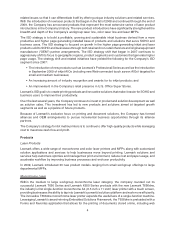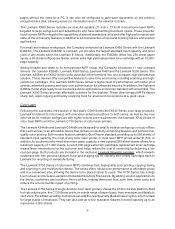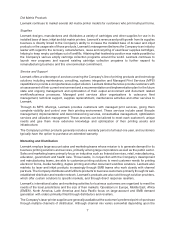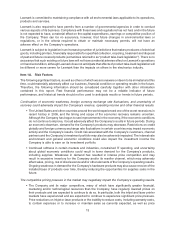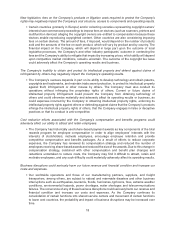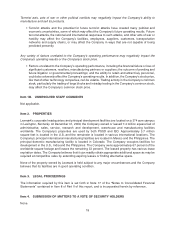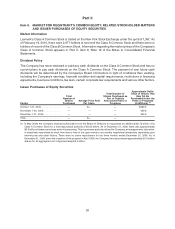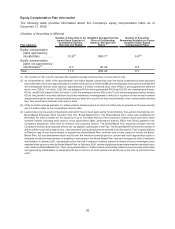Lexmark 2009 Annual Report Download - page 20
Download and view the complete annual report
Please find page 20 of the 2009 Lexmark annual report below. You can navigate through the pages in the report by either clicking on the pages listed below, or by using the keyword search tool below to find specific information within the annual report.protection measures, could result in lower profitability and jeopardize the Company’s ability to grow
or maintain its market share. In recent years, the gross margins on the Company’s hardware
products have been under pressure as a result of competitive pricing pressures in the market. If the
Company is unable to reduce costs to offset this competitive pricing or product mix pressure, and
the Company is unable to support declining gross margins through the sale of supplies, the
Company’s operating results and future profitability may be negatively impacted. Historically, the
Company has not experienced significant supplies pricing pressure, but if supplies pricing was to
come under significant pressure, the Company’s financial results could be materially adversely
affected.
The Company’s ability to be successful in shifting its strategy and selling its products into the higher-usage
segments of the inkjet market could adversely affect future operating results.
• In September 2009, the Company introduced a new line of all-in-one inkjet printers designed for
small to medium-sized businesses, which was a significant step in the Company’s transition into the
higher-usage segments of the inkjet market. The Company’s future operating results may be
adversely affected if it is unable to successfully market and sell its new product line, as well as
develop and manufacture additional products, designed for the geographic and customer and
product segments of the inkjet market that support higher usage of supplies.
Any failure by the Company to execute planned cost reduction measures timely and successfully could
result in total costs and expenses that are greater than expected or the failure to meet operational goals as
a result of such actions.
• The Company has undertaken cost reduction measures over the last few years in an effort to
optimize the Company’s cost and expense structure. Such actions have included workforce
reductions, the consolidation of facilities, operations functions and manufacturing capacity, and
the centralization of support functions to regional and global shared service centers. In particular,
the Company’s manufacturing and support functions are becoming more heavily concentrated in
China and the Philippines. The Company expects to realize cost savings in the future through these
actions and may announce future actions to further reduce its worldwide workforce and/or centralize
its operations. The risks associated with these actions include potential delays in their
implementation, particularly workforce reductions; increased costs associated with such actions;
decreases in employee morale and the failure to meet operational targets due to unplanned
departures of employees, particularly key employees and sales employees.
The Company’s failure to manage inventory levels or production capacity may negatively impact the
Company’s operating results.
• The Company’s performance depends in part upon its ability to successfully forecast the timing and
extent of customer demand and reseller demand to manage worldwide distribution and inventory
levels of the Company. Unexpected fluctuations (up or down) in customer demand or in reseller
inventory levels could disrupt ordering patterns and may adversely affect the Company’s financial
results, inventory levels and cash flows. In addition, the financial failure or loss of a key customer,
reseller or supplier could have a material adverse impact on the Company’s financial results. The
Company must also be able to address production and supply constraints, including product
disruptions caused by quality issues, and delays or disruptions in the supply of key components
necessary for production. Such delays, disruptions or shortages may result in lost revenue or in the
Company incurring additional costs to meet customer demand. The Company’s future operating
results and its ability to effectively grow or maintain its market share may be adversely affected if it is
unable to address these issues on a timely basis.
14


